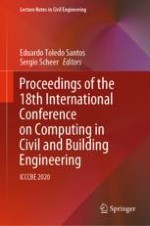2021 | OriginalPaper | Chapter
An Interview-Based Method for Extracting Knowledge of Skilled Workers at Construction Sites Using Photographs and Deep Learning
Authors : Yuichi Yashiro, Rikio Ueda, Fumio Hatori, Nobuyoshi Yabuki
Published in: Proceedings of the 18th International Conference on Computing in Civil and Building Engineering
Publisher: Springer International Publishing
Activate our intelligent search to find suitable subject content or patents.
Select sections of text to find matching patents with Artificial Intelligence. powered by
Select sections of text to find additional relevant content using AI-assisted search. powered by
